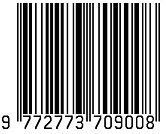Behaviors of the Curtain Wall Façade in the Tall Building Under Dynamic Actions- An Overview and Recommendations
Keywords:
Stack Joint, Curtain Wall Façade, Anti-Buckling Clip, Lateral Torsional BucklingAbstract
The flourishing growth of tall building construction with advanced technologies adopted façade structures is the new trend around the world. This study is mainly focused on the design and construction techniques of the curtain wall façade system and its behaviors under dynamic actions. Generally, a unitized curtain wall system is used as a building lope in the tall building due to its faster installation techniques. The provision of stack joints is a crucial part, especially at the design stage to accommodate the horizontal and vertical movement of the tall building under cyclic wind and seismic action. The effect of the deflection, story drift index, and column shortening of the tall building is analyzed using Finite Element Analysis (FEA) with 41 store building model on the façade wall is well discussed and recommended suitable measures to increase the life span of the façade wall under heavy dynamic repeated loading. On the other hand, lateral torsional buckling of the mullion, especially for the long span plays a vital role in the material and cost of the curtain wall panel. Therefore, this study is focused on the provision of the Anti-Buckling Clip (ABC) to increase the lateral torsional buckling capacity as well as flexural buckling capacity without increasing the stiffeners of the mullion.
Downloads
Published
How to Cite
License
Copyright (c) 2023 Jeyamohan Kunaratnam

This work is licensed under a Creative Commons Attribution-NonCommercial-NoDerivatives 4.0 International License.
The Authors hold the copyright of their manuscripts, and all articles are circulated under the terms of the Creative Commons Attribution License, which permits unrestricted use, distribution, and reproduction in any medium, as long as that the original work is properly cited.
The use of general descriptive names, trade names, trademarks, and so forth in this publication, even if not specifically identified, does not imply that these names are not protected by the relevant laws and regulations. The authors are responsible for securing any permissions needed for the reuse of copyrighted materials included in the manuscript.




